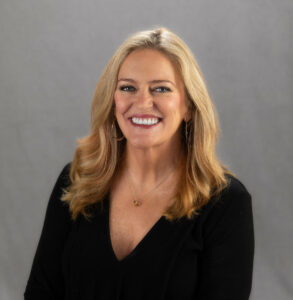
The Starbucks coffee machine in Dr. Sorrenson’s office is a crowd pleaser for the vast majority of her patients. Dr. Sorrenson recommends focusing on doing what makes the greatest number of your patients happy.
By Laurie Sorrenson, OD, FAAO
May 24, 2023
Shawn Achor’s Ted Talk on “The Happy Secret to Better Work” is one of my all-time favorite Ted talks. In his talk, Mr. Achor offers some amusing observations about “outliers” that I would recommend sharing with your staff. Our staff loves this video! However, let me get to why I like the talk, and the point of this article. The Ted Talk highlights a mistake I see made all too often in many medical practices.
Too many offices make policies and rules based on outliers. This applies not just to optometric offices I have visited or consulted with, but also to doctors’ offices that I have visited as a patient.
Let me give you some examples! One example of playing to the outliers is requiring ALL patients to sign a form stating that if the insurance does not pay, the patient is responsible for the balance. What percentage of the time does insurance not pay? Verified benefits typically get paid, making the percentage of unpaid balances that a patient should pay relatively small. If the office isn’t verifying benefits ahead of time, that percentage may be too high, but that is an office system issue. Will signing the form make the patient more likely to pay their balance? I doubt it.
Here’s another example. A few years ago, I went into a practice to do a consultation. The lobby, optical and front desk areas had eight signs, all of which either conveyed a negative message, or had a “don’t” on it, which automatically conveys negativity. You could tell these signs had been on the wall for a while. The signs were printed on copy paper, taped to the wall, showing wear and tear. In addition to the negative message they sent, the signs were unprofessional looking. Examples of the signs included: “Don’t look at glasses unless an employee is with you,” “You must pay at the time of the exam,” “We don’t take American Express,” “Knowing your insurance benefits is your responsibility,” and so on.
Other Articles to Explore
Ironically, when I asked the owner what set her practice apart from others, she replied that it was their customer service. These signs did not convey a “customer service vibe.” When I pointed this out, the owner said, “Yeah, but I can give you an incident for every one of those signs.” An incident, singular, another prime example of outliers running the practice.
At our office, we use a Starbucks grind and brew coffee machine, which has garnered a lot of attention from our patients. In their online reviews, they often mention the coffee machine as much or more than anything else in our office. Despite this, many doctors who visit our office express hesitation in having a coffee machine for fear of patients spilling and making a mess. While it is true that some patients have spilled coffee in the past, we have almost always been able to remove the stains, and on the rare occasion that we couldn’t, we simply replaced the affected carpet square. We believe that allowing the occasional outlier to dictate the removal of our beloved coffee machine would be a poor business decision.
In my own office, new staff and sometimes even my veteran staffers (though they usually know better), often ask me to make a rule or a policy to fix an outlier problem. For instance, when we first incorporated Weave texting capability, we sent a mass text to patients letting them know that we had the capability to communicate by text. The next day, my staff told me that we HAD to switch to “opt-in”only text messaging, as we had received SO many complaints.
When I asked how many complaints we had received, the response was, “I think we have had about 8-10.” This turned into an awesome teachable moment, with a short math lesson too! I explained to our staff that we had sent out over 5,000 texts. Therefore, 10 complaints out of 5,000 is only 0.2 percent. Not very many at all, in fact, not even close to 1 percent. I also explained to the staff that when you have an “outlier complaint,” you must do everything you can to make it right with the outlier, but you should not change a system that is working for over 99 percent of your patients.
Bottom Line: You don’t make policy based on the outliers, and you don’t ignore the outliers either. Evaluate what they are saying and see if they have possibly identified a way to improve your system(s). Every now and then this may be the case. However, make sure your policies and operations make sense for the majority of your patients, your office culture and the other systems you have in place, and be careful not to let the outliers control your business.
 Laurie Sorrenson, OD, FAAO, is president of Lakeline Vision Source in Cedar Park, Texas, and the Professional Editor of Review of Optometric Business (ROB). To contact her: lsorrenson@gmail.com.
Laurie Sorrenson, OD, FAAO, is president of Lakeline Vision Source in Cedar Park, Texas, and the Professional Editor of Review of Optometric Business (ROB). To contact her: lsorrenson@gmail.com.



























